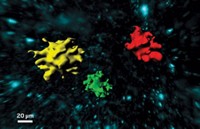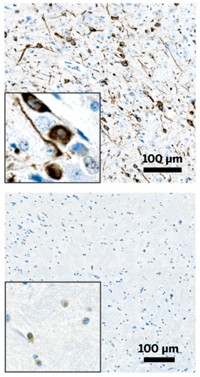Advertisement
Grab your lab coat. Let's get started
Welcome!
Welcome!
Create an account below to get 6 C&EN articles per month, receive newsletters and more - all free.
It seems this is your first time logging in online. Please enter the following information to continue.
As an ACS member you automatically get access to this site. All we need is few more details to create your reading experience.
Not you? Sign in with a different account.
Not you? Sign in with a different account.
ERROR 1
ERROR 1
ERROR 2
ERROR 2
ERROR 2
ERROR 2
ERROR 2
Password and Confirm password must match.
If you have an ACS member number, please enter it here so we can link this account to your membership. (optional)
ERROR 2
ACS values your privacy. By submitting your information, you are gaining access to C&EN and subscribing to our weekly newsletter. We use the information you provide to make your reading experience better, and we will never sell your data to third party members.
Biological Chemistry
Eye Test Might One Day Diagnose Alzheimer’s Before Symptoms Appear
Neuroscience: Imaging method spots disease peptide in mouse retinas
by Lauren K. Wolf
November 20, 2014
| A version of this story appeared in
Volume 92, Issue 47

According to proverb, the eyes are the windows to the soul. According to researchers, they might also be windows to brain disease.
Swati S. More and Robert Vince of the University of Minnesota’s Center for Drug Design have developed a noninvasive imaging technique that tracks accumulation of the Alzheimer’s peptide, amyloid-β, in the eye (ACS Chem. Neurosci. 2014, DOI: 10.1021/cn500242z). Although the pair have so far only peered into the retinas of mice with their patented, microscope-based method, they hope to one day use it to identify Alzheimer’s disease in human patients years before symptoms manifest.
Many neuroscientists now believe that once an Alzheimer’s patient begins to experience memory loss, irreversible brain cell damage has already occurred, making treatment difficult—if not impossible. So they have been trying to establish diagnostics, such as cerebrospinal fluid sampling, that detect the disease earlier, when therapeutics might have an effect.
A retinal scan might offer a noninvasive alternative. Evidence suggests that the buildup of amyloid-β in the retina mirrors buildup in the brain.
To help create an Alzheimer’s eye test, More and Vince raised a group of mice genetically engineered to overproduce amyloid-β aggregates. The pair extracted retinas from the group every two months and took hyperspectral images of the tissue with a commercial microscope. The rodents began to display the spectral signature of aggregated amyloid-β in their eyes at only four months of age, or young adulthood.
According to Shaun Frost, a scientist at Australia’s Commonwealth Scientific & Industrial Research Organisation (CSIRO), the Minnesota team did “good” work, but “there’s a long way to go before achieving a human test.” Frost and colleagues are currently running a clinical trial in which they give the amyloid-binding compound curcumin to volunteers and then scan the subjects’ retinas for the molecule’s fluorescent signal.
The main advantage of the Minnesota team’s method over his own, Frost says, “is their method does not require any substance to be injected or digested to highlight the amyloid.”
Minnesota’s More tells C&EN that she and Vince are now working with their microscope manufacturer, CytoViva, to image the eyes of live animals.





Join the conversation
Contact the reporter
Submit a Letter to the Editor for publication
Engage with us on Twitter